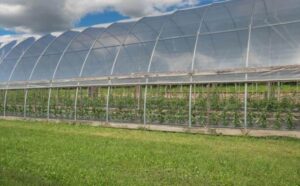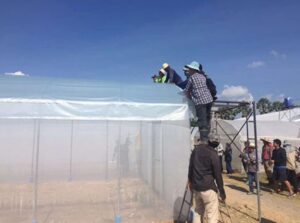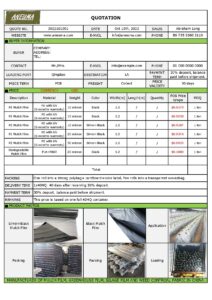Table of Contents
In the realm of modern agriculture, where innovation and efficiency are paramount, the choice of greenhouse materials plays a pivotal role in the success of crop cultivation. Among these materials, greenhouse films stand out as a crucial component that directly impacts plant health, growth, and ultimately, the yield. One of the key factors to consider when selecting a greenhouse film is its ability to provide effective UV protection and ensure longevity. In this comprehensive guide, we will delve into the significance of UV protection and longevity in greenhouse films and offer insights into how to make an informed choice for your specific crops.

Understanding UV Radiation and Its Effects
Ultraviolet (UV) radiation is a natural component of sunlight, and while it is essential for processes like photosynthesis, excessive exposure can be detrimental to plant health. UV-B and UV-A rays, in particular, can cause damage to plant cells, hinder growth, and increase susceptibility to diseases. In open-field cultivation, plants have the benefit of atmospheric filtration that reduces UV radiation. However, greenhouse environments require a specialized approach to mitigate the potentially harmful effects of UV rays.

The Role of Greenhouse Films in UV Protection
Greenhouse films act as a shield against excessive UV radiation, creating a controlled environment where plants receive the optimal amount of light without the risk of overexposure. High-quality greenhouse films are designed with UV stabilizers that selectively filter out harmful UV-B and UV-A rays, ensuring that plants thrive in a safer and more controlled setting. This UV protection not only promotes healthier plant growth but also contributes to the overall longevity of the greenhouse film itself.
The Connection Between UV Protection and Longevity
The correlation between UV protection and the longevity of greenhouse films is undeniable. UV rays can accelerate the degradation of plastic materials over time, leading to reduced film performance and integrity. A greenhouse film with inadequate UV protection may experience premature yellowing, brittleness, and even cracking, compromising its ability to create an optimal growing environment. On the other hand, a greenhouse film with superior UV protection can maintain its structural integrity, light diffusion properties, and overall effectiveness for an extended period.

Factors to Consider When Choosing a Greenhouse Film
1. UV Stabilization Technology
When evaluating greenhouse films, inquire about the UV stabilization technology used in their manufacturing. Look for films that explicitly mention the inclusion of UV stabilizers or additives that enhance UV protection. Leading manufacturers often conduct rigorous testing to ensure the effectiveness of their UV protection measures.
2. Expected Lifespan
Different greenhouse films have varying expected lifespans, which can be influenced by factors such as the type of plastic used, thickness, and UV protection level. Consider the projected lifespan of the film and assess whether it aligns with your crop rotation and long-term goals.
3. Light Transmission and Diffusion
UV protection should not come at the expense of light transmission and diffusion. Choose a greenhouse film that strikes a balance between UV protection and light distribution. High-quality films ensure that plants receive the necessary sunlight for photosynthesis while minimizing the risk of UV damage.
4. Climate Considerations
The climate of your region also plays a significant role in the choice of greenhouse film. If your area experiences intense sunlight and UV radiation, opting for a greenhouse film with superior UV protection becomes even more critical to safeguard your crops and extend the film’s lifespan.
5. Manufacturer’s Reputation
Research and choose greenhouse films from reputable manufacturers known for their commitment to quality and innovation. Reading reviews, seeking recommendations from fellow growers, and engaging with industry experts can help you make an informed decision.

Conclusion
As you embark on the journey of selecting the right greenhouse film for your crops, the importance of UV protection and longevity cannot be overstated. A greenhouse film that effectively shields your plants from harmful UV radiation while maintaining its durability is a valuable asset in modern agriculture. By considering factors such as UV stabilizers, expected lifespan, light transmission, climate suitability, and the manufacturer’s reputation, you can confidently choose a greenhouse film that not only enhances plant growth and yield but also stands the test of time. As you nurture your crops under the protective embrace of a high-quality greenhouse film, you are investing in a brighter, more resilient future for your agricultural endeavors.

